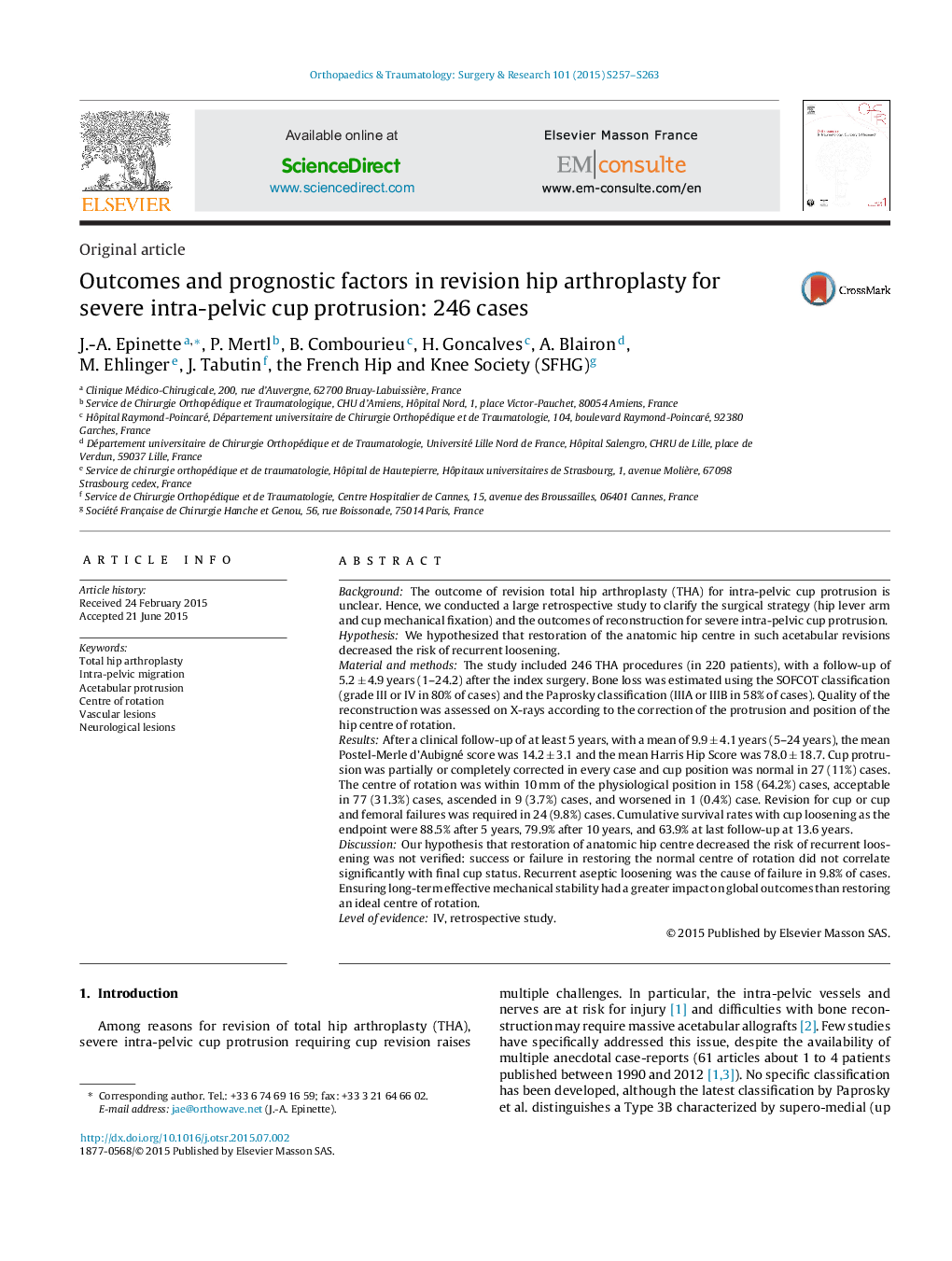| Article ID | Journal | Published Year | Pages | File Type |
|---|---|---|---|---|
| 4080913 | Orthopaedics & Traumatology: Surgery & Research | 2015 | 7 Pages |
BackgroundThe outcome of revision total hip arthroplasty (THA) for intra-pelvic cup protrusion is unclear. Hence, we conducted a large retrospective study to clarify the surgical strategy (hip lever arm and cup mechanical fixation) and the outcomes of reconstruction for severe intra-pelvic cup protrusion.HypothesisWe hypothesized that restoration of the anatomic hip centre in such acetabular revisions decreased the risk of recurrent loosening.Material and methodsThe study included 246 THA procedures (in 220 patients), with a follow-up of 5.2 ± 4.9 years (1–24.2) after the index surgery. Bone loss was estimated using the SOFCOT classification (grade III or IV in 80% of cases) and the Paprosky classification (IIIA or IIIB in 58% of cases). Quality of the reconstruction was assessed on X-rays according to the correction of the protrusion and position of the hip centre of rotation.ResultsAfter a clinical follow-up of at least 5 years, with a mean of 9.9 ± 4.1 years (5–24 years), the mean Postel-Merle d’Aubigné score was 14.2 ± 3.1 and the mean Harris Hip Score was 78.0 ± 18.7. Cup protrusion was partially or completely corrected in every case and cup position was normal in 27 (11%) cases. The centre of rotation was within 10 mm of the physiological position in 158 (64.2%) cases, acceptable in 77 (31.3%) cases, ascended in 9 (3.7%) cases, and worsened in 1 (0.4%) case. Revision for cup or cup and femoral failures was required in 24 (9.8%) cases. Cumulative survival rates with cup loosening as the endpoint were 88.5% after 5 years, 79.9% after 10 years, and 63.9% at last follow-up at 13.6 years.DiscussionOur hypothesis that restoration of anatomic hip centre decreased the risk of recurrent loosening was not verified: success or failure in restoring the normal centre of rotation did not correlate significantly with final cup status. Recurrent aseptic loosening was the cause of failure in 9.8% of cases. Ensuring long-term effective mechanical stability had a greater impact on global outcomes than restoring an ideal centre of rotation.Level of evidenceIV, retrospective study.
